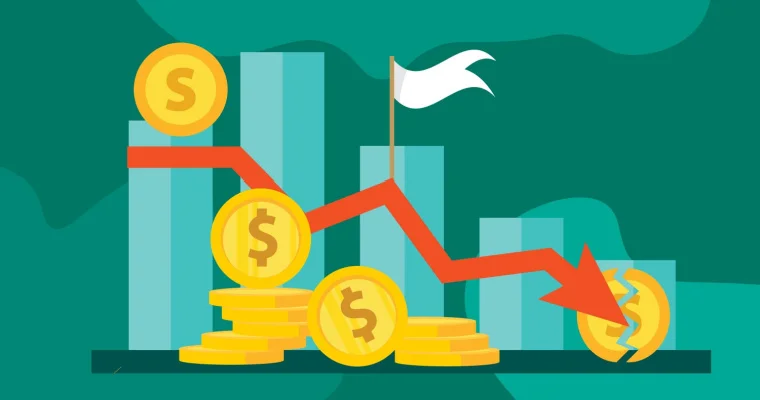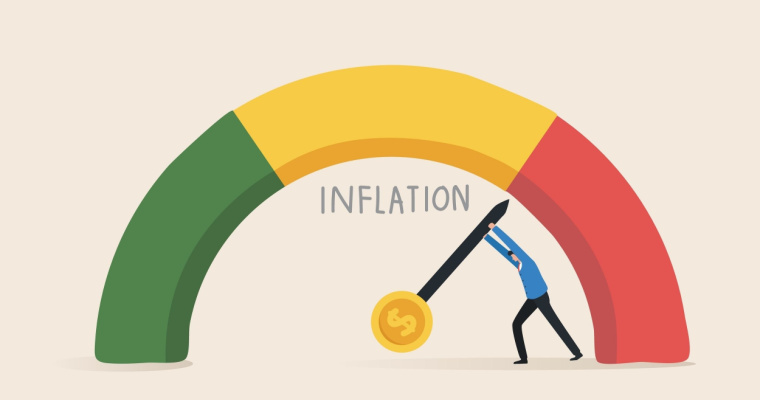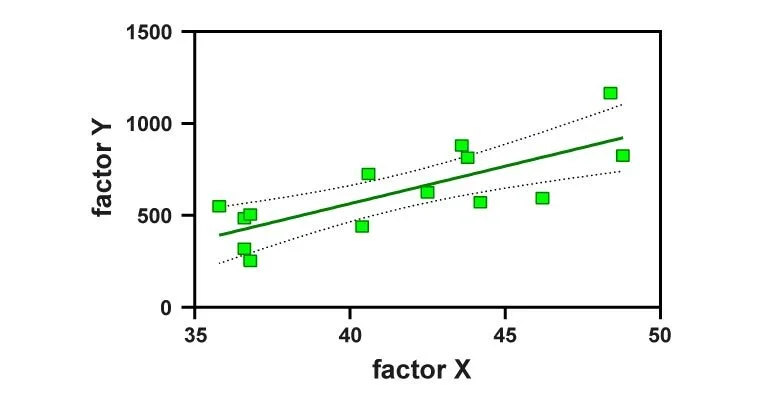What Is Weighted Average Cost of Capital (WACC) – Its Formula, Calculation and Example

The Weighted Average Cost of Capital (WACC) determines the cost a company has to bear to raise capital from all sources. The sources include stocks, bonds, and other long-term debts. It is one of the primary metrics that help investors determine if it is beneficial to invest in or lend money to a certain company. An elevated WACC indicates a high cost of financing and thus higher risk and vice versa.
Read on to understand the importance of WACC, its types, formula, calculation, example and how to interpret it.
Why is Using WACC Important?
The points below help to understand the importance of WACC and how investors and the company can make use of it:
1. To Evaluate Projects With the Same Risk
When a company is assessing new projects and they carry similar risks to the projects the company is already handling, WACC is an important benchmark that helps to assess the new projects and decide whether or not to accept them. For instance, a manufacturer wants to expand its business to new locations by establishing a factory for the same or similar products. Thus, they can use WACC as a hurdle rate to determine whether the cost of financing the new project is worth the returns.
2. To Evaluate Projects With Different Risks
WACC is an important tool for project evaluation. However, it works on the assumption that the projects being discussed have the same risk and the same capital structure. However, confusion arises when these assumptions are not met. WACC is still an effective measure when modifications are made for risk and target capital structure. These are called risk-adjusted WACC and adjusted present value. They help to find a way around problems related to WACC assumptions.
3. Use It as the Discount Rate in Net Present Value Calculations
The profitability of investments is widely assessed by evaluating projects based on their net present value. NPV calculations use WACC as the discount rate or hurdle rate that is used to discount all the terminal values and free cash flows.
4. To Calculate Economic Value Added (EVA)
EVA calculations require subtracting the cost of capital from the company profits. WACC is used as the cost of capital in these calculations and thus it becomes a way to create value.
5. For Company Valuations
All investment decisions are based on the valuation of a company. Investors base their analysis on the fundamentals by projecting future cash flows and discounting them using WACC; this helps them to calculate the value of the firm from which they can subtract debt to achieve the value of equity holdings.
Types of WACC
Below are the types of weighted average cost of capital:
- Marginal Weighted Average Cost of Capital: Since WACC is used to assess existing projects where old capital costs are irrelevant, it takes into account marginal costs of capital for all capital types. This way only the cost of acquiring capital at the time of the project is considered.
- Optimal Weighted Average Cost of Capital: Optimum WACC includes an optimum mix of capital and thus has the lowest possible cost of capital.
What is the WACC Formula?
Weighted average cost of capital formula and calculation are relatively more complex than other financial ratios. Below is the WACC formula that helps to understand how weighted average cost of capital works:
WACC Formula = (E/V * Ke) + (D/V) * Kd * (1 – Tax rate)
Here,
- E is the market value of equity
- V is the total market value of equity & debt
- Ke is the cost of equity
- D is the market value of debt
- Kd is the cost of debt
- Tax rate refers to the corporate tax rate
Below is the description of each term in the formula:
1. Market Value of Equity
A weighted average cost of capital calculator first calculates E i.e. the market value of equity. Here is an example to illustrate how it is calculated:
Suppose company X has outstanding shares of 5000 each with a market price of Rs.100 per share.
The market value of equity= outstanding shares * current market price per share
Market value of equity for company X= Rs.5,00,000
The market value of equity is also referred to as market capitalization. Investors use this value to determine where they should invest money and which investments they should avoid.
2. Market Value of Debt
A very low number of firms have their debt in outstanding bonds. Thus, it is not so easy to calculate the market value of debt. The listed price can be directly taken as the market value of the debt if the bonds are listed. In the weighted average cost of capital formula, V is the total market value of debt and equity. Thus, the calculation just requires an estimated market value of debt and the market value of equity.
3. Cost of Equity
The CAPM model is used to calculate the cost of equity (Ke). Below is the cost of equity formula:
Cost of Equity = Risk-Free Rate of Return + Beta * (Market Rate of Return – Risk-free Rate of Return)
Beta is the amount of risk that is expressed as a regression of the stock price of the company.
4. Cost of Debt
The following formula is used to calculate the cost of debt:
Cost of Debt = (Risk-Free Rate + Credit Spread) * (1 – Tax Rate)
Since the tax rate affects the cost of debt (Kd), the calculation is done based on the After-Tax Cost of Debt.
Here, the credit rating determines the credit spread. A higher credit rating leads to a decrease in the credit spread and vice versa. A simpler way of calculating the cost of debt is to divide interest expense by total debt.
The tax rate is the corporate tax rate as defined by the government. If there is a preferred stock, the cost of preferred stock needs to be accounted for.
Below is the revised weighted cost of capital formula if preferred stock is included:
WACC = E/V * Ke + D/V * Kd * (1 – Tax Rate) + P/V * Kp.
Here,
V = E + D + P and Kp = Cost of Preferred Stocks
How is WACC Calculated?
The steps below are followed to calculate the weighted average cost of capital:
- Find the Market Values of Debt and Equity: The first step in WACC calculation is to determine the equity and debt market values. There are the first two terms in the WACC formula separated by the plus sign. Thus, one must understand both debts and equities to know what costs are necessary for the company to continue being profitable.
- Calculate the Actual Debt and Equity Costs: The E and D in the WACC formula are the actual costs of capital debts and equities. Companies determine costs of debt by evaluating assets and liabilities and considering the real costs of covering capital debts. The calculation of equity cost is slightly different. Companies estimate the costs of stocks and bond issues by analyzing projected return rates. This is because the returns for shareholders and investors are a liability for the future.
- Calculate V by Combining the Market Values of Debt and Equity: Once the market and actual equity cost of capital and debt cost of capital have been determined, they must be combined to get V.
- Find the Corporate Tax Rate Applicable to the Company: The taxes that companies need to pay, vary based on the applicable tax rate, exemptions, withholdings and deductions. While substituting the tax rate value in the weighted average cost of capital formula, the percentage must be converted to its decimal form.
- Substitute the Values in the Formula: Once all the variables have been computed, substitute the values in the formula to calculate WACC. The result will offer insight into the profitability and the company’s ability to cover funding costs. It will also help to understand the amount of capital the organization will be able to cover and stay profitable.
Example of Weighted Average Cost of Capital
Let us consider a company with book value and market value of debt as Rs.1,00,00,000 and a market capitalization of Rs.4,00,00,000.
Assuming the company’s cost of equity is 10%.
E/V =0.8 [Rs.4,00,00,000/ Rs.5,00,00,000 (total cost of financing)]
Thus, weighted cost of equity = 0.08 (0.8 * 0.10).
Now that the first half of the WACC equation is determined, the next step is to determine the company’s weighted cost of debt. This requires determining D/V.
In this example it is 0.2 ( Rs.1,00,00,000 / Rs.5,00,00,000)
Now, multiply the D/V value by the company’s cost of debt ( assume as 5%)
The last step is to multiply the product from the previous step with 1 minus the tax rate. Thus, if tax rate is 0.25, 1-Tc = 0.75
Weighted cost of debt = 0.0075 (0.2 * 0.05 * 0.75)
Adding the weighted cost of equity and weighted cost of debt gives a WACC of 0.0875 or 8.75%
How to Interpret WACC?
The company’s return at the end of the period determines how WACC will be interpreted. If the return exceeds the WACC, it indicates good performance. However, investors must consider carefully if there is negligible profit.
Investors who wish to calculate WACC can use one among the book value and market value approaches.
Calculating WACC using market value is more complex as compared to the calculation of other ratios. Those who wish to skip the complexity can calculate it based on the book value mentioned in the income statement and balance sheet. However, the book value method isn’t as accurate as market value calculation. This is why the market value method is used more often.
Benefits of WACC
WACC is an integral element of the discounted cash flow model and is thus important for financial analysis. It helps to determine the minimum rate that a company must earn on its assets to satisfy the stakeholders. Here are some benefits of WACC and its calculation:
It can be used to compare similar business risks
- Companies can identify corporations that are incurring the lowest costs in using capital
- It helps to make investment decisions
- It acts as a hurdle rate for companies
- WACC also helps to evaluate mergers and acquisitions
- It helps to perform economic value-add calculations
Limitations of WACC
- It is based on the assumption that there will be no change in capital structure. However, this is not always possible, especially when there is a requirement for more funds.
- Another assumption is that there will be no change in the risk profile. This may introduce a chance of rejecting profitable projects and accepting bad ones.
Points to Remember Before Using WACC in a Project
Here are some important points to remember before using WACC in a project:
- Perform a proper risk analysis to identify capital costs that carry very high risk. This level of risk may be too high to track with WACC calculation and thus capital costs must be measured differently
- Identify all capital sources accurately from the balance sheet. This will include multiple interest obligations, bonds, and loans
- Pay attention to market value and the actual cost of equity and debt calculations to ensure that they reflect the current financial position and processes
Final Word
Weighted Average Cost of Capital or WACC is a common metric that can be found in analyst reports while researching stocks. However, it isn’t so common for individual investors and is primarily used by finance professionals. It represents the amount a company owes per rupee of debt that it borrows to finance its endeavours. Analysts use this method to evaluate the true value of investments.
FAQs
Ans: Security analysts and potential investors often use WACC to assess the value of investment opportunities.
Ans: The higher the weighted average cost of capital, the higher the risk associated with the investment. This is because it means that investors will have to pay higher interest per unit of investment.
Ans: The WACC indicates the expectations of lenders and shareholders to receive in return for financing the company and its projects.

Customer’s Feedback
No comments found.What is Primary Deficit? – Example, Formula & Measures
What is a Primary Deficit? Primary Deficit is the difference between the current year’s fiscal... Read More »What is Financial Ratio Analysis? – Objectives, Types and Uses
Ratio analysis is a process that allows people to assess the financial health of a company. Using t... Read More »Treasury Management – Its Functions, Types and Benefits
Even the most well-funded business can run into huge losses if it does not have the resources to fu... Read More »How Anti Money Laundering Combats Financial Crime?
Anti Money Laundering (AML) is a system of rules, laws, regulations, and procedures that financial ... Read More »What is Salvage Value and Why is it Useful?
Salvage value, also called scrap value, is the value of a specific asset after its useful life. In ... Read More »Key Difference Between Factoring and Forfaiting in Trade Finance
Factoring and forfaiting have grown in prominence as major sources of export financing. For the uni... Read More »What is Factoring and its Importance in Financial Management?
Factoring is a practice in which a company buys the accounts receivable of another company at a dis... Read More »What is Budget Surplus: Its Effects, Advantages and Impact with Examples
When the revenue of a government, business, or individual exceeds its expenses in a given period, i... Read More »What is Balanced Budget – Components, Importance and Examples
In financial planning or the budgeting process, a balanced budget is one in which total anticipated... Read More »What Does Inflationary Gap Mean in Macroeconomics?
In macroeconomics, the difference between current and potential GDP is known as a gap. This gap is ... Read More »What is Accounting Conservatism in Finance and How Does it Work?
Accounting conservatism involves a conservative set of accounting guidelines wherein the worst-case... Read More »Multiple Linear Regression (MLP) – Uses, Formula and Examples
Various statistical models help in establishing a relationship between different variables. Multipl... Read More »Top 10 Chit Fund Schemes in India in 2023
Chit funds are one of the most popular return-generating saving schemes in India. It is a financial... Read More »10 Best Gold ETFs in India to Invest in April 2023
Gold ETFs or Gold Exchange Traded Funds are passively managed funds that track the price of physica... Read More »10 Best Demat Accounts in India for Beginners in 2023
Creation of Demat accounts revolutionised the way trades were conducted at the stock exchanges. It... Read More »20 Best Index Funds to Invest in India in April 2023
What is an Index Fund? An index fund is a type of mutual fund or exchange-traded fund (ETF) that... Read More »Best Arbitrage Mutual Funds to Invest in India in April 2023
Arbitrage funds are hybrid mutual fund schemes that aim to make low-risk profits by buying and sell... Read More »10 Best SIP Plans in India to Invest in April 2023
What is SIP? SIP or Systematic Investment Plan is a method of investing a fixed amount in ... Read More »10 Best Corporate Bond Funds in India to Invest in April 2023
Corporate bond funds are debt funds that invest at least 80% of the investment corpus in companies ... Read More »10 Best Bank for Savings Account in India [Highest Interest Rate 2023]
Savings account is a type of financial instrument offered by several banks. It lets you safely depo... Read More »




















